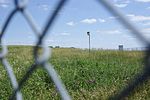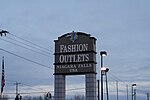Cayuga Island
Islands of New York (state)Islands of Niagara County, New YorkIslands of the Niagara RiverNiagara County, New York geography stubsRiver islands of New York (state)

Cayuga Island is an island in Niagara County, New York, United States. The Niagara River flows along the south side of the island, and a stream, Little River (also called "Little Niagara River"), forms a channel along the north side.It is part of the LaSalle area of Niagara Falls, New York. It consists of middle-class housing and a city park. The island is believed to be the place where 17th-century French explorer Rene-Robert Cavelier, Sieur de La Salle built his barque called Le Griffon in 1679.
Excerpt from the Wikipedia article Cayuga Island (License: CC BY-SA 3.0, Authors, Images).Cayuga Island
Hennepin Avenue, City of Niagara Falls
Geographical coordinates (GPS) Address Nearby Places Show on map
Geographical coordinates (GPS)
| Latitude | Longitude |
|---|---|
| N 43.0733895 ° | E -78.9580963 ° |
Address
Hennepin Avenue 8951
14304 City of Niagara Falls
New York, United States
Open on Google Maps








